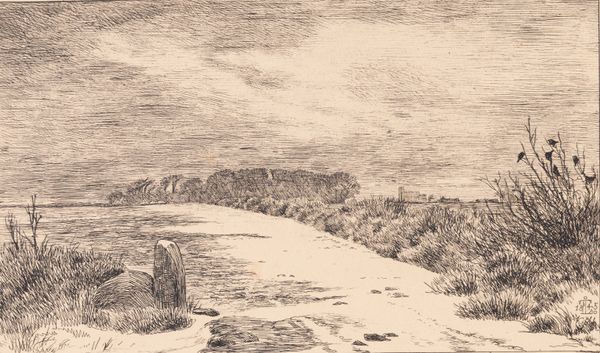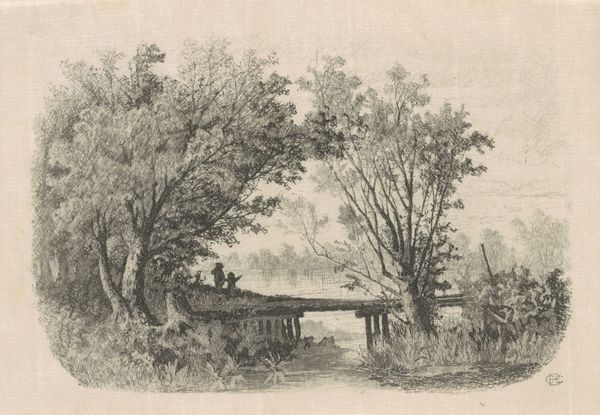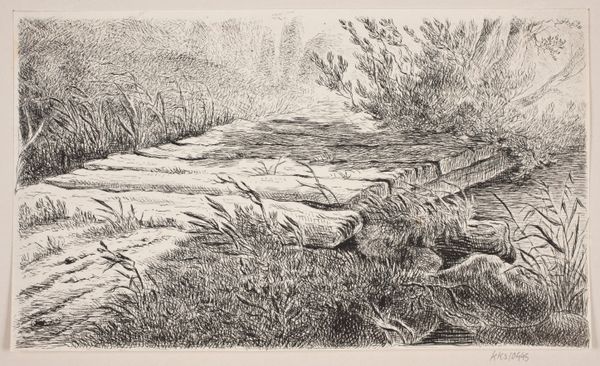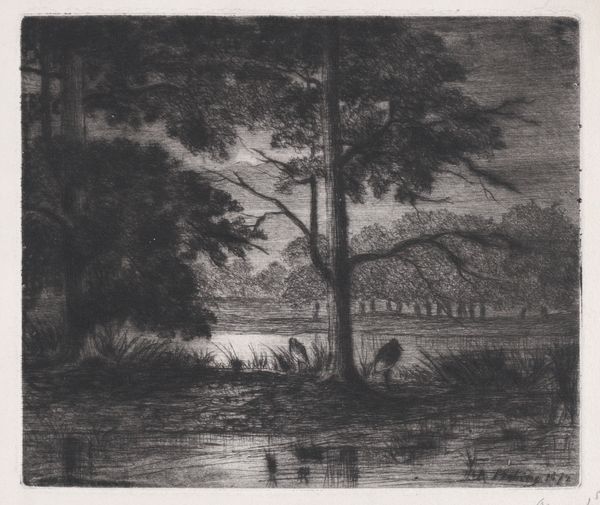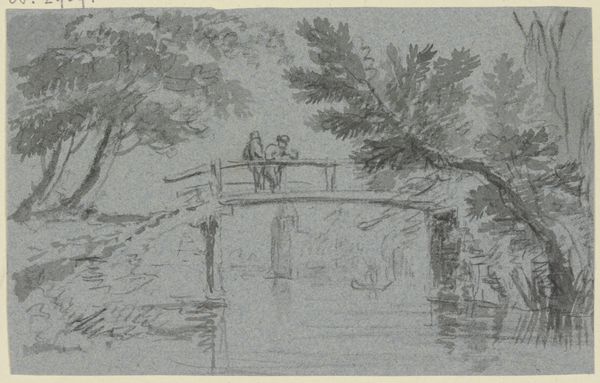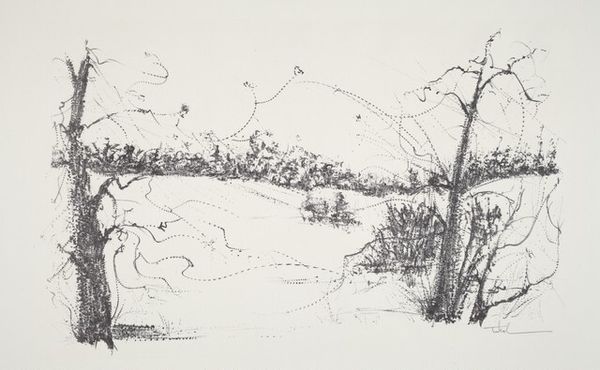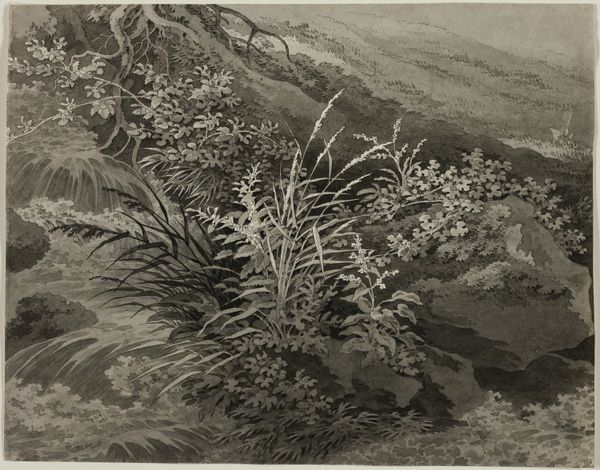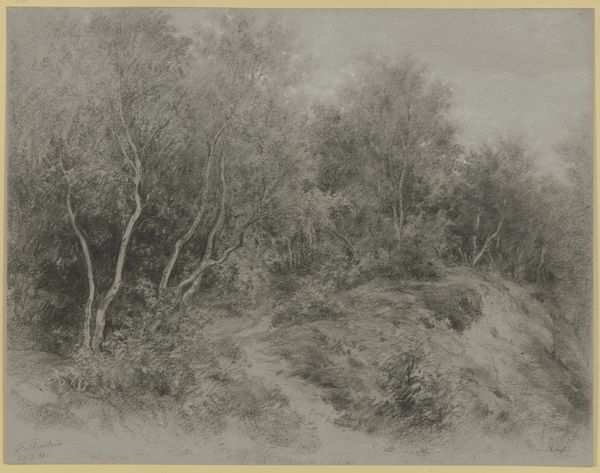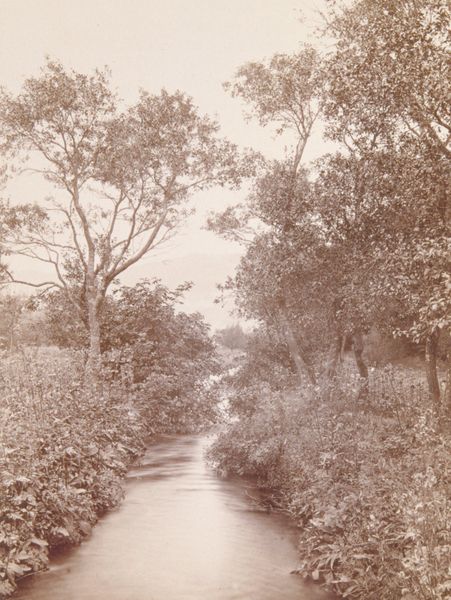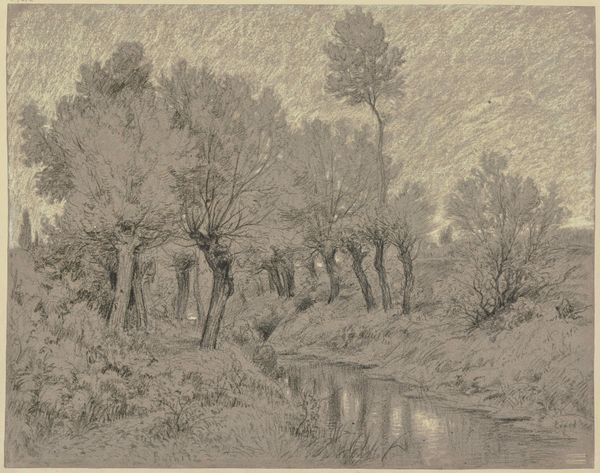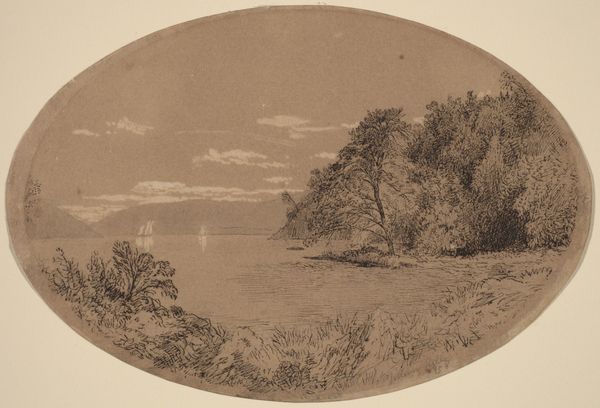
aquatint, drawing, print, pencil
#
aquatint
#
drawing
# print
#
pencil sketch
#
landscape
#
figuration
#
pencil drawing
#
romanticism
#
pencil
#
line
Dimensions: 132 mm (height) x 185 mm (width) (bladmaal), 115 mm (height) x 169 mm (width) (plademaal), 101 mm (height) x 164 mm (width) (billedmaal)
Curator: J.F. Clemens’ "Parti af Sanderumgaards have," likely created between 1748 and 1831, presents a scene from the gardens of Sanderumgaard, rendered in aquatint, drawing, and print. It is currently held at the SMK, Statens Museum for Kunst. Editor: It’s striking how subdued and intimate the scene feels, despite the presence of what appears to be a small figure crossing the bridge. The tones are muted, creating a sense of stillness, almost melancholic contemplation. Curator: Sanderumgaard was redesigned at the end of the 18th century, a time of significant societal shift, heavily influenced by Romanticism. Viewing the drawing in this light, consider how gardens acted as vital, politicized public spaces. Who could access them and how did these spaces foster identity? Editor: That's a helpful framework. Looking at the lone figure, then, I'm considering questions of access and privilege within that constructed natural world. Is this person an owner, a gardener, or someone else? Their identity is critical in informing the narratives Clemens' work presents. Curator: Exactly. The bridge becomes a symbolic threshold. Visually, its ramshackle, almost makeshift quality is really fascinating; it seems so temporary juxtaposed with the ordered design around it. Does this relate to societal hierarchies and the perceived place of different individuals within them? Editor: And does the method of representation echo those sentiments? We have the artist using aquatint and pencil - fairly accessible materials perhaps - to depict a space often associated with exclusivity and wealth. Is there some inherent social critique in this stylistic choice? Curator: Clemens here reflects and perpetuates the political status quo. How could future artists address that using this landscape as a springboard? Editor: So many threads to untangle here! Curator: Agreed! Thank you, I feel like I'm seeing this through fresh eyes!
Comments
No comments
Be the first to comment and join the conversation on the ultimate creative platform.
